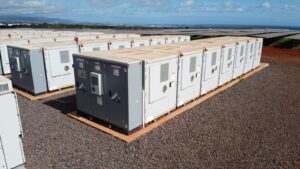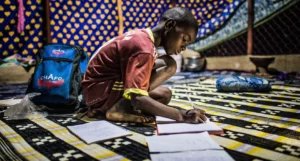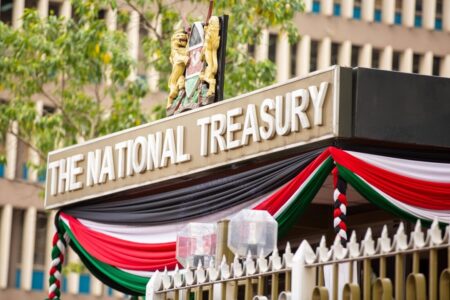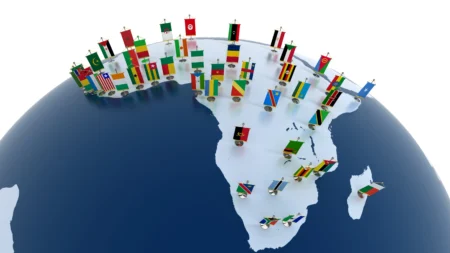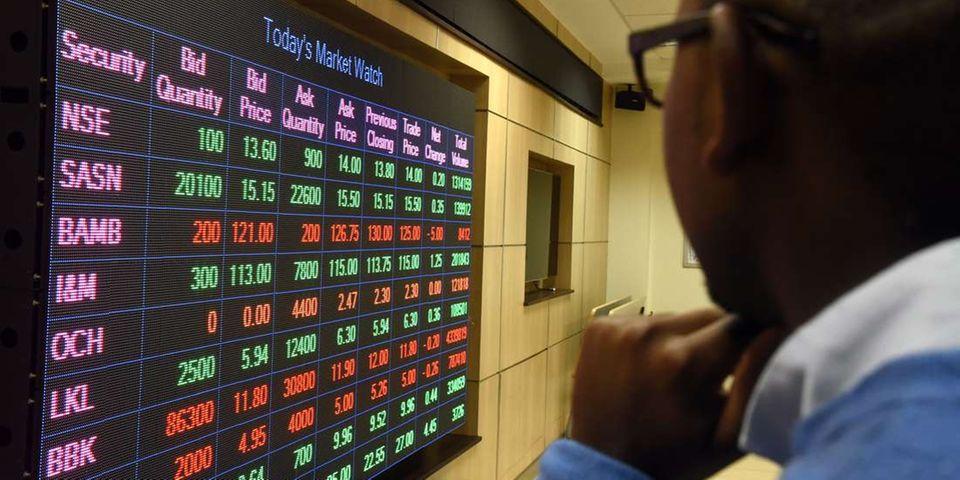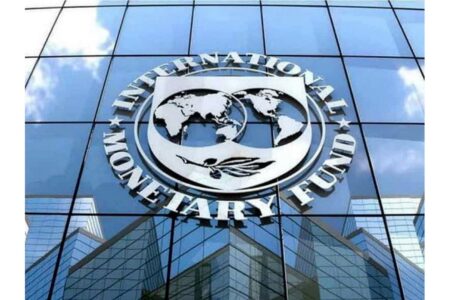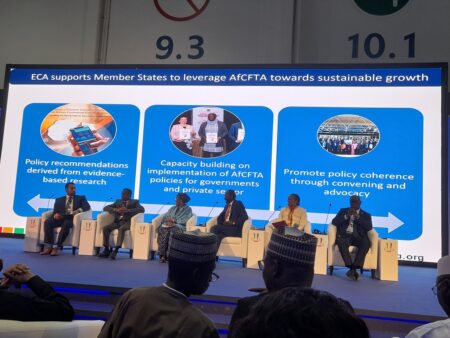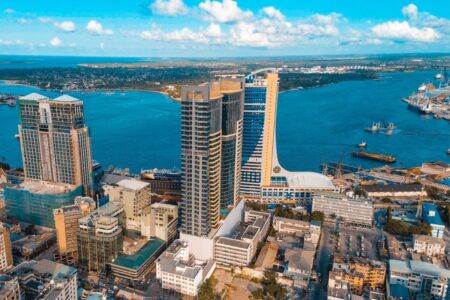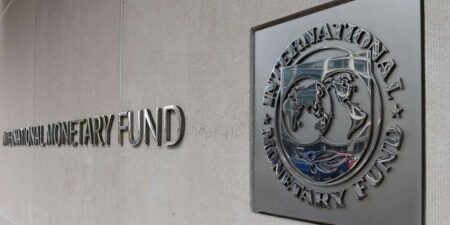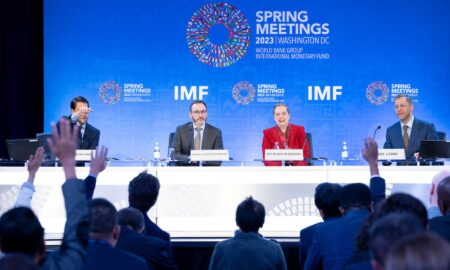- Wärtsilä Energy offers tips on how Africa can navigate energy transition and grid reliability
- Powering Africa: Africa’s Path to Universal Electricity Access
- Global investment trends at AIM Congress 2024: a spotlight on the keynote speakers
- South Africa’s deepening investment ties in South Sudan oil industry
- Agribusiness could drive Africa’s economic prosperity
- Dawood Al Shezawi: Why AIM Congress 2024 is the epicenter of global economic and cultural dialogues
- d.light’s 600,000 cookstoves project verified as top source of quality carbon credits
- Artificial intelligence (AI) could create a turning point for financial inclusion in Africa
Browsing: IMF
- Weaker currencies make the fight to tackle inflation harder given Africa’s dependence on imports.
- According to the IMF, the average depreciation for the region since January 2022 is about eight percent, but events vary by country.
- Ghana’s cedi and Sierra Leone’s leone depreciated by over 45 percent. An analysis by The Exchange Africa shows the Kenya shilling has shed about 18.4 per cent since May last year.
Most African currencies have weakened against the US dollar, fanning inflationary pressures across the continent as import prices surge, IMF now says. This, together with a growth slowdown, leaves policymakers with difficult choices as they balance keeping inflation in check with a fragile recovery.
According to the IMF, the average depreciation across Africa since January 2022 is about eight percent though events vary by country. Ghana’s cedi and Sierra Leone’s leone depreciated by more than 45 per cent.
An analysis by The Exchange …
- Kenya’s forex reserves dipped to $6.2 billion on May 19, an eight-year low, before a slight improvement to $6.4 billion on May 26.
- At $6.4 billion, Kenya’s reserves are just 3.60 months of import cover, which is below the Central Bank of Kenya’s desired target.
- What’s more, the reserves are below the East Africa Community preferred threshold of 4.5 months of import cover, hence exposing the country to high volatilities in the global market.
A dip in export earnings, coupled with reducing diaspora inflows at a time of huge debt repayments have left Kenya grappling with low forex reserves, raising concerns on the health of East Africa’s economic powerhouse.
The low forex reserves are further compounding the dollar shortage problem that has been gripping importers for months. Importers, mainly in the manufacturing and the energy sectors, have been struggling to secure the greenback to replenish their suppliers.
Kenya’s forex reserves
…The implications of fragmentation and polarization on Africa’s economic growth and whether these trends will continue are unknown. What is certain is that multilateral organizations will need to continue encouraging international dialogue to promote economic integration and collaboration. As a result, one problem that emerges is whether African nations would adopt a unified stance or take a non-aligned approach in the Sino-American dispute.…
- Kenya’s Nairobi Securities Exchange posted drop in capitalization in April due to investor flight.
- Other poorly performing bourses were Uganda, Mauritius, Namibia, Morocco, Tanzania, Rwanda and Tunisia.
- Zambia, South Africa, Ghana and Egypt remained positive railing Zimbabwe and Malawi.
Zimbabwe has maintained the lead in the African equity markets returns by recording the highest gains at 112.33 percent year-to-date, the latest data shows. In the period under review, Malawi recorded the highest month-on-month value of 10.96 percent.
At the same time Kenya posted the highest drops both on year-to-date and month-on-month, Nairobi Securities Exchange (NSE) monthly barometer indicates, which stood at negative 15.56 percent and minus 3.52 percent, respectively.
Other poor performers across Africa were Uganda, Mauritius, Namibia, Morocco, Tanzania, Rwanda and Tunisia. In West Africa, Nigeria performed poorly on the month-on-month index but remained positive year-to-date. Zambia, South Africa, Ghana and Egypt remained positive railing Zimbabwe and Malawi.
Kenya’s …
- The IMF says latest tranche is meant to finance “general national development efforts.”
- When the entire Extended Credit Facility ECF is disbursed, Tanzania will be eligible to receive in excess of $304.7 million.
- Tanzania faulted for not publishing audit report of its Covid-19 pandemic-related spending.
The International Monetary Fund (IMF) has approved $153 million in credit financing for Tanzania. The loan, however, comes with a tough call for enhanced monitoring and transparency in public spending.
This financing is only the first part of the loan that was issued following the completion of the first part of the country’s Extended Credit Facility (ECF) review. When the full ECF is completed, Tanzania will be eligible to receive in excess of $304.7 million.
What is the loan for? According to the public statement released after the deal was signed earlier this month, the money is meant to finance “general national development efforts.”
“The …
- By enhancing intra-African trade, AfCFTA estimates that the continent with gain $195 billion by 2045.
- These gains are projected to be mainly realised in industry, services, agrifood, and energy sectors.
- By collaborating under AfCFTA, countries can greatly boost regional supply chains for the global electric vehicles market.
African countries need to embrace a set of reforms critical in driving Africa’s free trade plan, AfCFTA. The call comes even as more African leaders sign the agreement on the African Continental Free Trade Area (AfCFTA).
AfCFTA has the potential to transform regional trade and thereby lift billions of livelihoods in Africa out of poverty. To realise these benefits however African leaders need to go beyond blueprints.
“It is not for lack of blueprints that Africa has not structurally transformed,” United Nations Economic Commission for Africa (UNECA) Secretary-General Antonio Pedro said.
Mr Pedro was speaking at the Africa Regional Forum by UNECA on …
- Tanzania’s economic reform program is progressing well in a challenging global economic environment and the authorities remain committed to IMF’s loan plan.
- Ongoing reforms in the country touch on strengthening the economic recovery, preserving macroeconomic stability, and supporting structural reforms toward sustainable and inclusive growth.
- Tanzania’s three-year Extended Credit Facility Arrangement for total access of about $1,046.4 million at the time of program approval received the greenlight on July 18, 2022
The International Monetary Fund (IMF) has given Tanzania’s economy a shot in the arm by furnishing the country with $153 million loan, bringing to around $304.7 million, the amount received so far under the lender’s extended credit arrangement struck in July last year.
The loan will be channeled towards economic recovery, preserving macro-financial stability, and promoting sustainable and inclusive growth.
IMF argued that reforms centre on strengthening fiscal space to allow for much-needed social spending and high-yield public investment, …
- Growth in sub-Saharan Africa is expected to slow to 3.6 percent in 2023, as a “big funding squeeze” tied to the drying up of aid and access to private finance hits the region.
- If no measures are taken, the funding shortage may force countries to reduce fiscal resources for critical development areas of health, education, and infrastructure, the IMF warned.
- Persistent global inflation and tighter monetary policies have led to higher borrowing costs for sub-Saharan African countries, placing huge pressure on exchange rates.
Economic growth in sub-Saharan Africa is projected to slow to 3.6 percent in 2023, as a “big funding squeeze”, tied to the drying up of aid and access to private capital sweeps across the region, the International Monetary Fund (IMF) has said.
The Regional Economic Outlook for Sub Saharan Africa April 2023 report indicates that if no measures are taken, to tackle this shortage of funding, a …
- The International Monetary Fund (IMF) says global economic growth is set to decline marginally as ongoing banking industry turmoil raises uncertainties.
- IMF’s World Economic Outlook for April 2023 update indicates that global output will fall to 2.8 per cent in 2023 from 3.4 per cent last year, before rising to 3 per cent in 2024.
- Advanced economies to experience a slowdown to 1.3 per cent in 2023 from 2.7 per cent in 2022 as the world economy recovers from the unprecedented upheavals of the last three years.
Global economic growth is likely to decline marginally as the US banking turmoil raises uncertainties in the markets, the International Monetary Fund (IMF) has warned.
IMF’s World Economic Outlook for April 2023 update indicates that global output growth will decrease to 2.8 per cent from 3.4 per cent last year, before rising to 3 percent in 2024,
According to the report, advanced economies …
- The World Bank projects Sub-Saharan Africa’s economic growth will dip to 3.1 per cent in 2023.
- Weakening growth is attributable to multiple crises including debt burden, high inflation, and slowing global economic activity this year.
- Policymakers across Sub Sahara Africa, however, remain hopeful of navigating the impact of global economic disruptions key among them the Russia-Ukraine war that has constrained food imports
A huge debt portfolio, high inflation and slowing economic activity across the globe are set to see Sub-Saharan Africa’s economic growth dip further to 3.1 per cent this year from 3.6 per cent posted in 2022.
The projection by the World Bank comes even as policymakers across Sub Sahara Africa remain hopeful of navigating the impact of global economic disruptions key among them the Russia-Ukraine war that is constraining food imports coupled with high fuel prices which is worsening inflation.
The World Bank and the International Monetary Fund …
